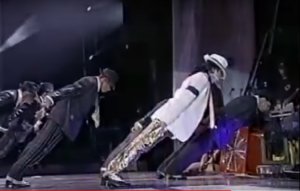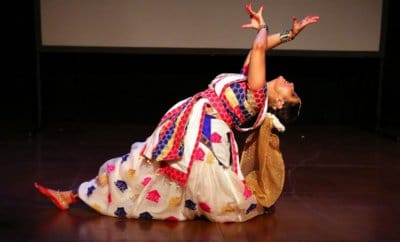Arts
Indian Neurosurgeons Decode Biomechanics Behind Michael Jackson’s Dance Move

Michael Jackson
Photo: Flickr
Indian neurosurgeons from PGI Chandigarh have published a paper on Michael Jackson's gravity-defying dance move in the 1988 music video, Smooth Criminal.
Three Indian neurosurgeons, fascinated by Michael Jackson’s performances, have published a paper that looks at how the pop legend achieved his famous gravity-defying tilt move.
“It’s not really possible physically to do it,” neurosurgeon Dr. Nishant Yagnick, who practices at the Postgraduate Institute of Medical Education and Research in Chandigarh, was quoted as saying by the CNN. “He was cheating gravity,” he said. The paper, titled “How did Michael Jackson challenge our understanding of spine biomechanics?,” written by Yagnick, and his colleagues Dr Manjul Tripathi and Dr Sandeep Mohindra, was published in the Journal of Neurosurgery on May 22.
Jackson’s 45-degree forward tilt was first seen in the 1988 music video of the song, Smooth Criminal. It featured the artiste and his team members lean straight forward 45 degrees with their feet flat on the floor and hold the pose until they return upright posture with little effort.
“You can bend a maximum of 25 or 30 degrees forward before you fall on your face. I tried to do it, and I fell,” Dr. Manjul Tripathi told the publication.
According to the researchers, when the human body bends forward with the back straight, the erector spinae muscles that run parallel to our vertebrae “act like cables” and support the body as the center of gravity shifts. However, when the focus of bending is switched to the ankles, the strain is instead put on the calf and the Achilles tendon, which aren’t really built for that role.
“This allows for a very limited degree of forward bending from the ankle joints, while keeping a stiff straight posture — unless you are Michael Jackson,” the study says. “Most trained dancers with strong core strength will reach a maximum of 25 or 30 degrees of forward bending while performing this action.”

The gravity-defying tilt of Smooth Criminal performed live. Photo: YouTube screenshot
However, Jackson and the other dancers did the move with the help of special shoes that would anchor him to the floor during the tilt. The shoes, patented on Oct. 26, 1993, “have a specially designed heel slot which can be detachably engaged” with a “hitch” (such as a nail) projected through the stage surface “by simply sliding the shoe wearer’s foot forward, thereby engaging with the hitch member,” as per the description in the U.S Patent Office.
Tripathi points out that even with the special shoe, one cannot do a 45-degree tilt. “You need a very good core of strength, and that strength was in Michael Jackson and his Achilles tendon,” he added.
“Normal people, even with the shoe, probably can’t do it. It takes a lot of practice to develop the core muscles, abs and central trunk muscles to get the strength to do it,” Yagnick said.
Atlanta physiatrist Dr. Jose Garcia-Corrada, who specializes in spine rehabilitation at Emory School of Medicine, told the publication that not only would most people need intensive training to accomplish the move, they could also seriously injure themselves if they fell.
Michael Jackson’s musical and dancing legacy is so powerful that it has pushed whole generations of dancers to go beyond their limits,which in turn, is putting new kinds of stresses on the spine, Tripathi said. “So in India, neurosurgeons are perplexed due to all these new kinds of neuroskeletal injuries we are now seeing,” he added.
“We are seeing a lot of complex dance moves that they just copy but don’t really learn from a professional. They are young, 18 or younger, and they want to get ahead, and they are pushing themselves. They don’t know what they are dealing with. There should be education on the right and wrong way to do things,” Tripathi said.




You must be logged in to post a comment Login